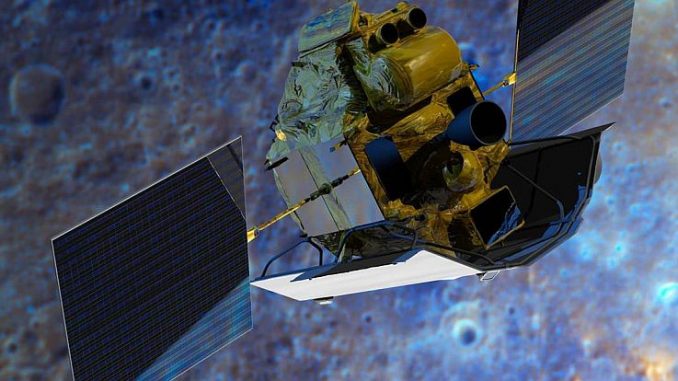
NASA spacecraft, Messenger (The Mercury Surface, Space ENvironment, GEochemistry, and Ranging), is set to crash land into Mercury’s surface on April 30th.
It will be the final act of the probe which has been orbiting Mercury for the last four years. Scientists managed to keep the spacecraft circling the innermost planet of the solar system for three years longer than planned.

BYPASS THE CENSORS
Sign up to get unfiltered news delivered straight to your inbox.
You can unsubscribe any time. By subscribing you agree to our Terms of Use
Latest Video
The final use of the probe will be to crash into the surface of Mercury, to gather scientific data. It will help with a better understanding of the planet’s atmosphere, magnetic fields, craters and the nature of its surface.
Its final descent will allow Messenger to peek into craters at the planet’s pole; where the sun never shines, looking for water and chemical building blocks of life.
Stuff reports:
Out of fuel and losing altitude, Messenger is expected to make a high-speed crash near the planet’s north pole at around 3:25 EDT (1925 GMT) on April 30, flight controllers told reporters during a webcast news conference.
The impact at 8,724 miles per hour (14,040 km per hour) will leave a fresh crater, roughly 52 feet (16 meters) in diameter, that should serve as an interesting reference point for a follow-on European spacecraft called BepiColombo, which is due to arrive in 2024.

The crater may help scientists learn more about the planet’s unexpectedly fast weathering processes, one of dozens of Messenger’s finding.
Topping the lead scientist’s list of Messenger discoveries is the detection of elements such as potassium and sulfur on the planet’s surface, volatiles that should have evaporated under the presumably scorching conditions 36 million miles (58 million km) from the sun where Mercury formed and orbits today. Earth, by comparison, is about 93 million miles (150 million km) from the sun.
Messenger also confirmed the existence of ices and other materials, possibly even carbon-based organics, on the floors of craters where sunlight never shines.
As it makes its final descent toward the planet’s surface, Messenger will attempt to peer directly inside targeted craters, said lead scientist Sean Solomon, with Columbia University’s Lamont-Doherty Earth Observatory in New York.
It also will look for magnetized crust in an effort to flesh out the odd story of why such a tiny planet has such a strong, and recently discovered asymmetrical, magnetic field.



